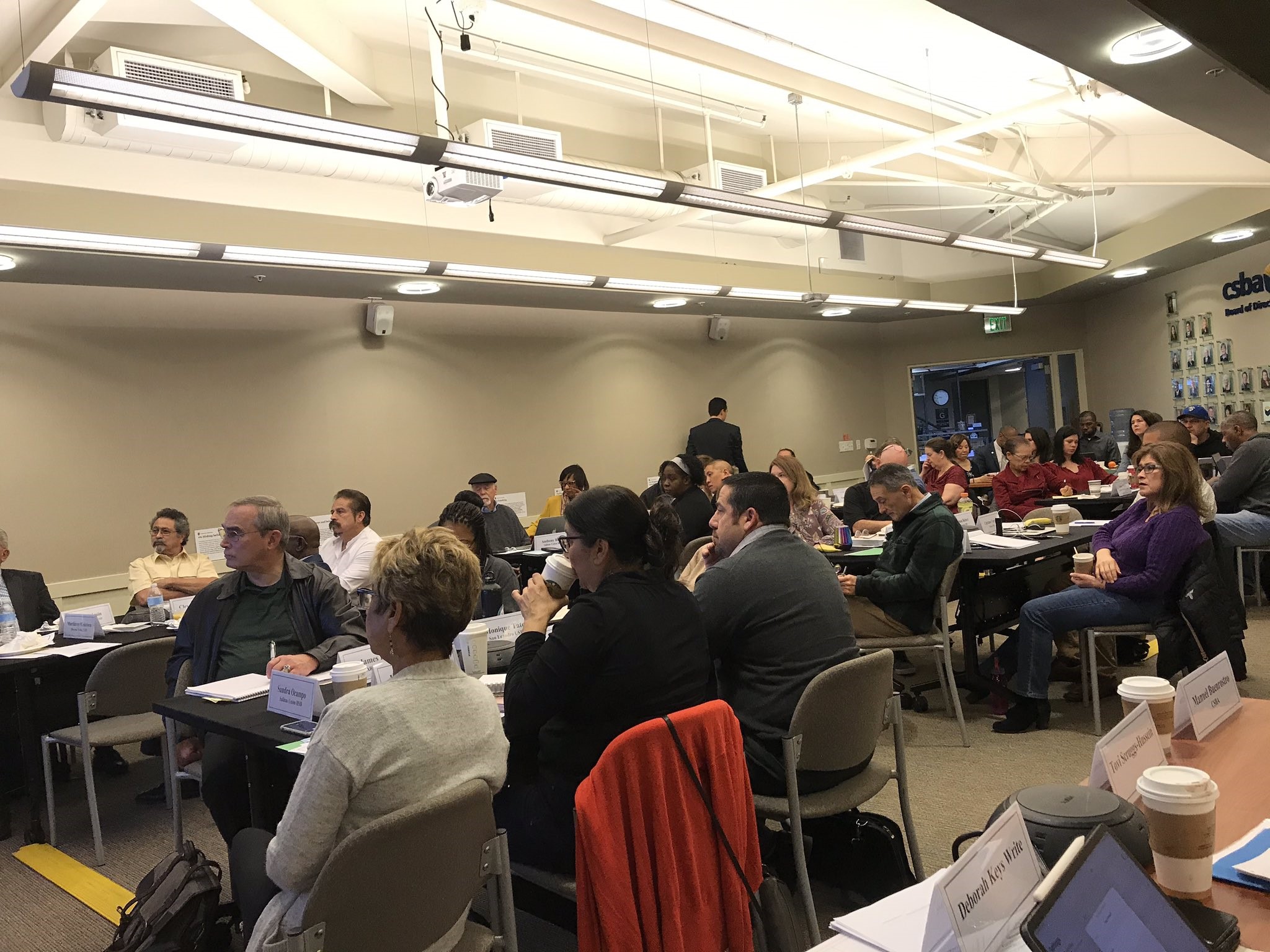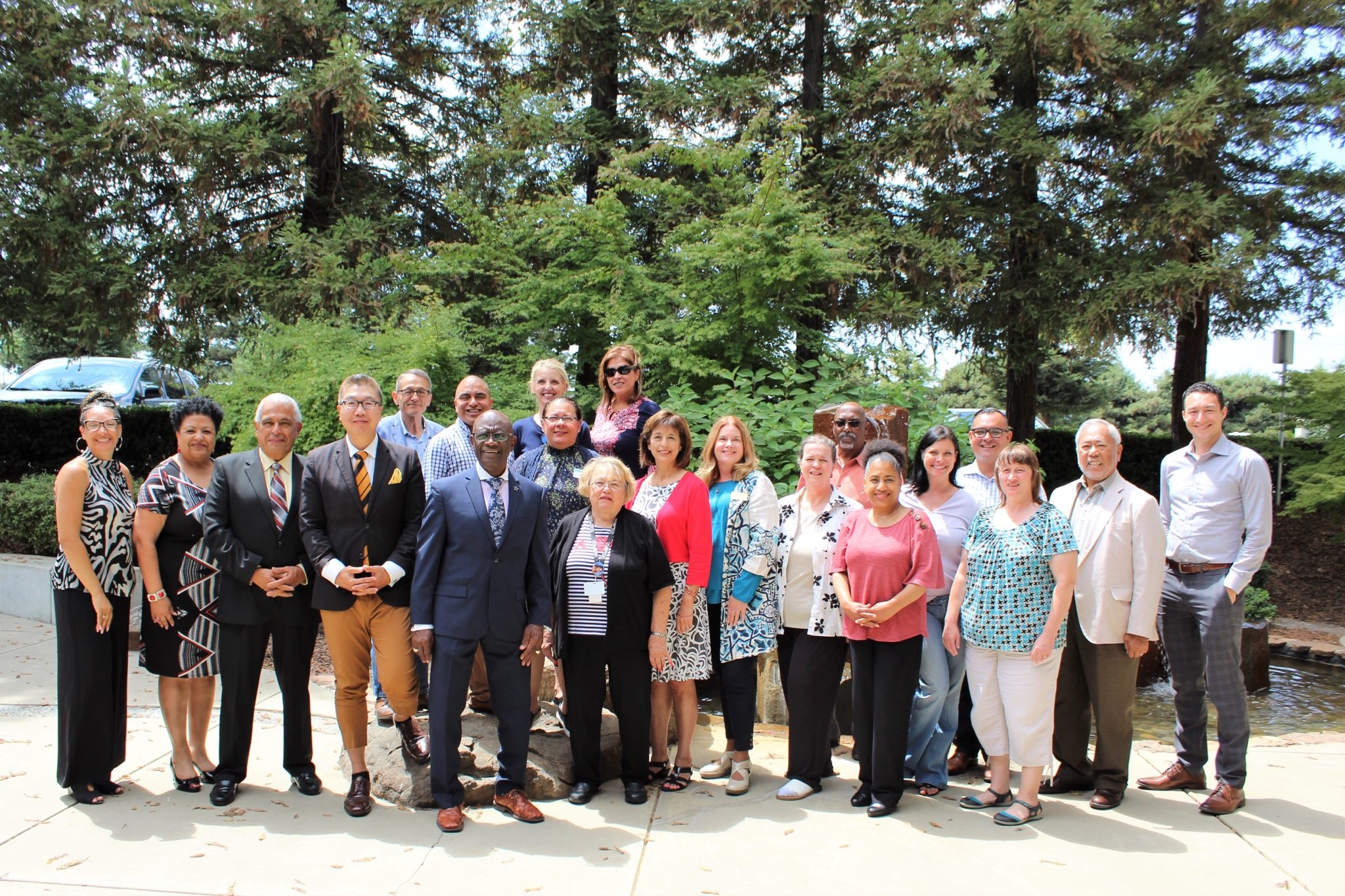Closing persistent opportunity gaps requires a commitment to educational equity. In summer 2018, CSBA launched an Equity Network with a grant from the Stuart Foundation, providing extensive support and professional development to board members across California on concepts related to educational equity. Topics addressed included implicit bias, cultural proficiency, the history of public education and the role of education leadership in disrupting a system of inequity.
The second cohort of network participants met at CSBA’s offices in West Sacramento for the final time March 6–7 to discuss the status of their districts’ equity impact plans, review what they’ve learned so far and further analyze how they can continue working toward creating equitable opportunities for all students.
CSBA spoke to a handful of participants to discuss what they’ve learned through the Equity Network and their district plans moving forward.
Anthony Duarte, Hacienda La Puente Unified School District school board president:
“I came in thinking we were already doing some good work in our district when it came to equity issues with our students, but having been a part of this network, I’ve seen that we still have a lot of work to do. Being able to bring all this information back to our board and our district staff is what I’m taking away most from this. Walking through our school sites, I’d never thought to look at it with an equity lens — looking at the classrooms and how teaching is being done and looking at the classroom climate and atmosphere. Being able to walk a school site with that different lens is something I’ve taken back as well.”
Lisa Kaplan, Natomas USD trustee:
“We’ve been really systematic in Natomas about how we address our inequities, but starting this program brought it to the forefront and caused me to think more deeply as to where the inequities are, how we look at them and how data applies to that. We looked specifically at our International Baccalaureate program and we had enough data that we could look at what students were involved in IB versus students at schools not involved in IB, and where the inequities were. Asking, ‘does (the data) show higher achievement or higher graduation rates?’ and ‘how do we assess if this might be a program that we want to expand to our other campuses?’ We’ve been looking at CSBA’s equity policy and didn’t feel that it specifically fit Natomas. It felt like we were just passing a policy to pass a policy without considering how it fit our district. So going through this network has caused us to look at other places in the United States that have done this and what applies to us.”
Monique M. Tate, San Leandro USD trustee:
“My experience with this Equity Network cohort has been a positive one. I’ve learned a lot and we’ve implemented many things in our district. However, to actually bring equity across the board to our district, we’re always going to need to work on this. It’s bigger than our board — it’s our community, our students, our county. You have different layers of equity in our community, and in order to be effective for our students we all have to work together and we all have to make sure we’re all on the same page to bring student achievement to the forefront for all students. This cohort has helped my district to start addressing issues that maybe haven’t always been addressed, and to educate others throughout our district and community.”
Robert Ocampo, Alisal Union School District trustee:
“I wrote up a paper on what I took from the book that we read while doing this work about why equity is important, and my gave my summary of the book with key points and recommendations for districts to all my board members, superintendent and assistant superintendent in hopes that we can move forward with this. I’d like to see study groups of stakeholders in my district meeting to develop an equity policy, because I think it has to come from the bottom up. It starts from the top down because the board has to vote to form these types of committees, but those committees have to put something together. The board can write policies but those are just words on paper — it’s not a living document unless there’s buy in. My challenge has been motivating people to do this work that I’d like to see.”
Martha Alvarado, Vista USD trustee:
“This Equity Network training has empowered me with the knowledge and the research of historical trends in public education regarding equity. Intrinsically, I knew what some of the inequities were, as a person of color and as an educator, but to have the knowledge and data makes it much more powerful. With that information I feel that it would be easier for the other trustees on our school board to understand how important the work is within our district and to begin to tackle some of the most severe problems we have in our district. The other thing I took from this experience is information from the first cohort that has already done the work. When I see where they’re at now compared to where they started, it’s helpful for me and our district to look at some of the practices that have been successful in those districts and they worked through the equity network too.”






